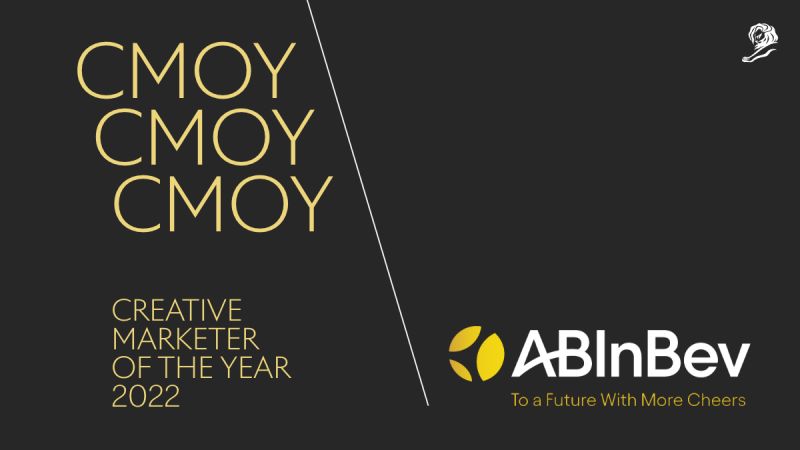Five tips for improving learner engagement
Mar 18, 2022 by Five tips for improving learner engagement

Learner engagement: you know it when you see it...right?
When you wander into a live classroom with engaged learners, you know it immediately: raised hands, students on the edges of their seats, eyes locked on the instructor, palpable energy.
But what does learner engagement in corporate digital learning environments look like? What does it feel like? How should it be measured? Do we have the technical capabilities necessary to measure it? How can it be improved? (Researchers are now moving beyond the "know it when you see it" test to ask the same questions about live classroom engagement, by the way.)
At Nomadic Learning, we’ve spent years thinking about these questions and experimenting with solutions as we developed our cohort-based learning Academy. This blog post offers five proven tips for enhancing engagement within digital learning environments.
Employee engagement and learner engagement
Over the last few years, we’ve seen an employee engagement revolution, driven by the near universal recognition that engaged employees “produce better business outcomes than other employees—across industry, company size and nationality, and in good economic times and bad.” Not to mention better talent retention, increased customer loyalty, and strengthened resiliency. There’s also an emerging recognition that employee engagement is especially important—and challenging!—in the context of hybrid work and during times of acute transformation.
Employee engagement is now something that large organizations define, track, and optimize. Many invest a great deal in employee engagement platforms like Lattice or 15five to help. A good example is Delta Airlines, which consistently outperforms its competitors by tying employee engagement, satisfaction, and training initiatives directly to measurable business outcomes like safety and on-time performance. And by ensuring that improvements in employee engagement generate improvements in customer experience. We’ve come a long way from the idea that employee engagement is something ineffable and unmeasurable.
But what about engagement within learning and professional development platforms? After all, learning is an important part of becoming a better—and more engaged—manager. And, as we’ve proven at Nomadic, there’s a correlation between highly engaged learners and highly engaged employees.
Yet approaches to engagement within digital learning platforms have failed to keep pace with the evolution of approaches to employee engagement. Conditioned by years of poor engagement, there’s a damaging assumption that digital learning inevitably buys scale and speed at the expense of poor learner engagement and low impact. (The bar is lowered from the beginning.)
Improvement is also tough because most organizations still focus exclusively on program completion as the only learner engagement metric of record. That’s not good enough. Asking some simple questions about about what completion means in the context of everyday work—outside of learning environments—reveals the shortcomings of this approach:
- When it comes to work projects, is the only relevant metric completion? Or does the quality of the output count?
- Are managerial experiences a “tick the box” exercise? Or does it make a difference what lessons managers walk away with?
- Is task completion the only mission of a manager? Or do team motivation and morale also matter?
- Is work completed only for the benefit of the employer? Or can employees find intrinsic value and satisfaction in accomplishing goals and developing new skills?
We all know the answers to these questions, but we rarely apply them to the measurement of learner engagement. (And of course there’s no employee engagement platform in the world that relies on task completion as the primary engagement metric.)
Another difficulty is that, for all the enthusiastic talk about engagement, nobody agrees what engaged digital learning looks like in practice. Is it a function of time-on-task, understanding, social interaction, completion, conversation, application, or something else? What exactly are we measuring in the first place? And if we knew what we were measuring, which approaches to learning would help?
Five principles of learner engagement
Here are five tips for understanding, measuring, and improving learner engagement that Nomadic applies to everything we do as a company. They’re not a foolproof recipe for learning success; but the absence of any single principle makes success impossible over the long term.
1. Decide what counts as learner engagement, and what doesn’t
If you ask ten people what engagement means, you’ll get ten different answers. That’s because engagement is actually a placeholder for a basket of measurable indicators. As an example, engagement platform Lattice looks at eleven categories. "You know it when you see it" isn’t good enough.
Yet even drilling down into specific categories within engagement, the indicators remain complex. In the context of employee engagement, aspects of this engagement such as feeling listened to by managers or the experience of psychological safety are still too abstract and divorced from practice to be effectively measured. Likewise, measuring engagement within digital learning experiences is just as complex.
At Nomadic, we track a large set of behaviors on our platform that we think are the best possible proxies for benchmarking learner engagement. Through years of experimentation and A/B testing, we’ve decided to look at things like numbers of comments and time spent learning relative to comparable learners as important indicators of engagement. Completion is just one small piece of the puzzle.
It’s key to make an explicit decision about what counts as learner engagement within your own organization. That decision should be informed by the learning goals you want to achieve. If you care about promoting conversation across organizational silos, for example, then Nomadic’s metrics for interactions between learners on diverse teams suddenly become really interesting.
2. Speak the language of business and of individual learners
For businesses, speaking the language of their learners is easier said than done. Most L&D professionals define professional development goals as part of an annual planning exercise. The problem is that most of these capabilities are neither clearly linked to the goals of business leaders nor to the goals of individual learners.
Here are a couple of tips we regularly offer to clients:
- Instead of saying, “we’ll teach you to overcome silos,” say something like, “we’ll teach you to make new connections with experts from throughout the organization.”
Explanation: The C-Suite always wants to get rid of barriers between teams and functions, but managers often see those barriers as safety ropes and markers of their specialized knowledge and authority. The task is to frame this kind of learning in terms of positive opportunities for managers to enhance their careers—instead of threats.
- Instead of saying, “we’ll teach you productivity skills,” say something like, “we’ll help you save time, prioritize so that you don’t feel overwhelmed, and get recognized by executives more often.”
Explanation: Most managers don’t like the implication that they’re not productive. But all managers face day-to-day productivity challenges that they’re looking for help with. The task is translating the generic learning topics into language that directly addresses those manager challenges.
Everyone knows in the abstract that ‘listening skills,’ to take one common topic, are essential for effective managers. But how will better listening skills impact the business? Do we care most about listening to clients? To team members? What does effective listening look like in practice within different parts of the organization? How will we know if learning about listening actually drives durable changes in behavior? How can we excite line-of-business leaders about improvements in the listening capabilities of their people? Are we looking at measures of responsiveness like Net Promoter Scores (NPS) to track improvements in listening?
An outcome has to be measurable—either quantitatively or qualitatively—and legible to business leaders to count.
Equally important is making the case to individual learners that they should care about the development of their listening skills. Exactly how will better listening enhance their effectiveness and impact their careers? Is somebody out in the world noticing improvements in their listening skills? Will performance evaluations improve as a result? Are they investing their time and energy in learning that will benefit their lives and careers or just optimizing their performance relative to a narrow task?
Without tying learning topics both to business goals and to the existing career development goals of individual learners, you’re missing out on the two most powerful drivers of learner engagement:
- The time and attention and support of executives and managers
- The inherent desire of most employees to improve their career prospects
World-class learner engagement begins at the intersection of business goals and individual career goals. If you don’t think your learning strategy is quite there yet, you can start with these ideas:
- Work with business leaders to articulate exactly how improved capabilities will impact business results for particular segments of learners and particular lines of business.
- Use learner interviews, focus groups, and surveys (including open-ended questions!) to better understand how learners understand their own professional development and the links between learning and development. Pay attention to the language and the categories learners themselves use to describe these links.
- Repeatedly make the case to learners, using language that makes sense to them, that a particular skill or capability matters. Ensure that the narrative is consistent across all phases: from program design, to initial communications, to follow-up and measurement.
3. Orchestrate engaging learning experiences over the long haul
In marketing, engagement is all about attracting the attention of distracted customers and then getting them to click or read or share their information or to make a purchase. For a given ad, your Call-To-Action will either succeed or fail in a matter of seconds.
Learner engagement is fundamentally different. We’re interested in sustained engagement over weeks or months. The temptation can be to focus on concentrated engagement relative to a particular program or simulation. All too often, this looks like an employee rushing through some learning to get it out of the way, rather than an employee investing a bit of time each week to gain new capabilities—aligned to their own goals—over the medium to long term. At Nomadic, we’ve seen the importance of achieving engagement across a variety of diverse learning experiences for much longer periods of time.
For us, effective engagement is the product of carefully orchestrated and iterative cycles of cohort-based social learning, individual reflection, team discussion, application, and then more social learning. If these cycles are short-circuited, there will be very little application of new knowledge or mindsets to daily work—and less impressive performance gains. We look at engagement within each of these phases and between them. Strengthening the connective tissue is just as important as building the muscles when it comes to engagement. Both have to work in harmony to permit forward movement and the development of new knowledge and capabilities.
Every other aspect of learning design follows from this principle. Through a tremendous amount of A/B testing, we’ve discovered the optimal rhythm of content, interactive activities, and discussion prompts within programs. We’ve worked out the ideal length of programs in the context of different topics. We’ve experimented with the most effective sequence of diverse learning experiences across longer learning journeys. All in the service of engaging learners over sustained periods of time.
4. Craft learning experiences that provide the right level of challenge to keep learners engaged
Without a live instructor to guide learner discussion, the default choice in digital contexts is typically to overexplain, to deliver lists (“six ways to be a better coach”), and to skip straight to the lessons. The problem is that it’s impossible to get the sustained learning engagement we need to be effective with this kind of content. Learners will quickly become bored and bounce to another site. Or they’ll memorize the lists simply to get a high quiz score and then forget all about them—long before they try to apply them to their work.
If people learned best by memorizing lists, we could demolish every university tomorrow and send students 1000-page textbooks instead.
The trick is paradoxically to embrace the spirit of incompleteness within digital learning experiences. Think about the lessons you’d like learners to internalize first (the destination), and then design learning that points in the right direction (the journey). Rather than leading with finished lessons, guide learners to discover their own insights and then determine how to apply them to their own working lives. The challenges overcome along the way are the wellspring of engagement.
At Nomadic, this is one reason why every learning module is anchored by a case study that tells a gripping story. Cases work when they’re relevant to learners’ lives and when learners have to work—but not too hard!—to extract their own lessons from them. A growing body of research shows that people are most interested in stories when they have to make “medium-level” inferences to piece together the logic behind the plot’s advancement. In seeking these causal connections, the audience becomes an active participant in the story’s creation. We don’t shy away from ambiguity or complexity because we know that solving puzzles and actively wrestling with meaning are the most effective ways to engage learners.
5. Harness the power of belonging to drive learner engagement
Early in the history of Nomadic, we embraced instructorless cohort-based learning as the best possible approach to achieve high levels of engagement at scale. People simply care more when they learn alongside small groups of peers. They’re held more accountable; they collaboratively hone ideas; and they keep coming back to see how the conversation is progressing.
More fundamentally, an enormous amount of recent research demonstrates that learner engagement is also qualitatively different when it happens in social contexts, even at the level of individual neurobiology. The "social encoding advantage" can generate gains in understanding, retention, and application. Brains simply work differently when they’re in dialogue with other brains!
At Nomadic, everything we do is designed to amplify the power of social learning to enhance engagement. To take one small, but particularly important, example: every time somebody responds to a learner’s comment, that learner receives an immediate notification with a link back to the discussion thread. Those notifications are by far the most effective way to reestablish engagement. People are wired to care what their peers think about their ideas. We channel that dopamine rush into more engaged learning—instead of Instagram or TikTok clicks.
Another example: within organizations, there are often friendly rivalries between different functions or markets. The gamified nature of Nomadic experiences means that cohorts of learners from, say, Mexico can compete against cohorts of learners from, say, Argentina. We’ve seen this dynamic again and again, in clients as diverse as IBM, AB InBev, Citibank, and The Economist.
Learners know that the single best way to earn a high score for their teams is to contribute comments that spark conversations. Pride in their identities as Mexican or Argentinian employees becomes a strong motivation to engage and to comment more frequently and more thoughtfully. Competitive drive and team spirit are harnessed to prosocial and collaborative ends. And unexpected—from the perspective of senior executives, anyway—global teams often end up at the top of the leaderboard.
We’ve also seen that executives from various functions or markets often start organically caring about the collective performance of their people, especially when that performance is clearly measured. Leader emails, town halls, and the sharing of powerful learner comments and ideas are effective ways for them to enlist their energy and authority in driving even more engagement.
The goal in the end is to create a virtuous cycle that encompasses individual, team, and organizational levels, and to jumpstart a highly-engaged culture of social and collaborative learning. The secret is to harmonize the in-platform experience and communications with everything that happens outside of the platform. And to mimic as closely as possible those real-world conditions within safe spaces for learning and exploration. Nothing drives engagement like the feeling that there are real stakes involved—social as well as individual. And nothing leads to learning that impacts the bottom line like high levels of learner engagement.
*
To explore how one organization managed to capture their learners’ attention, maintain learnger engagement over time, and drive real transformation in the midst of the Covid-19 pandemic, check out our case study on cohort-based learning at AB InBev.



